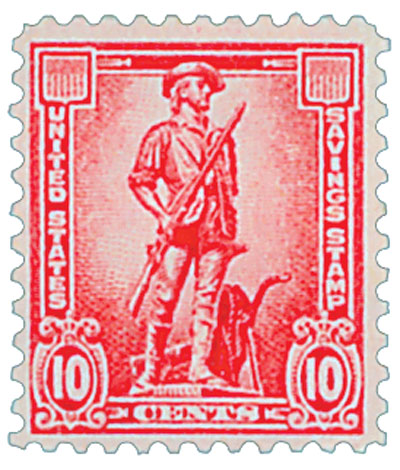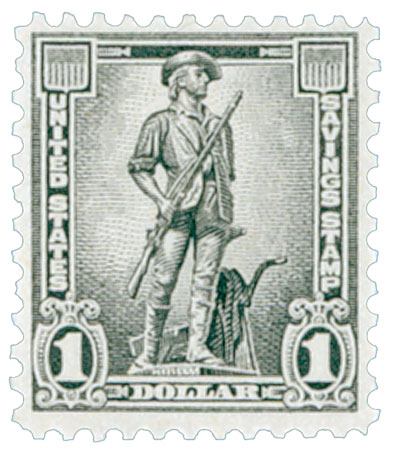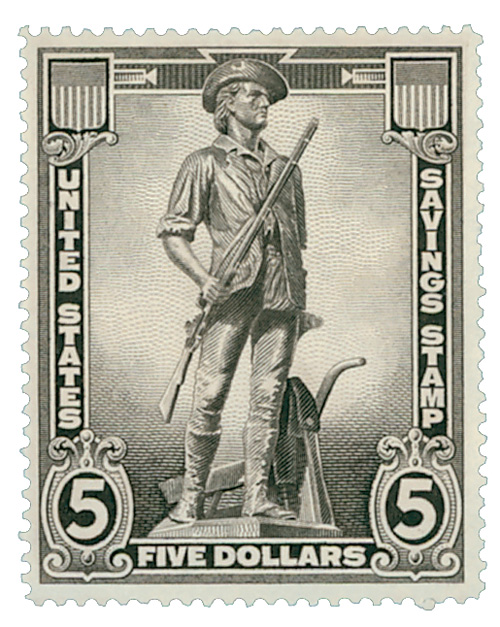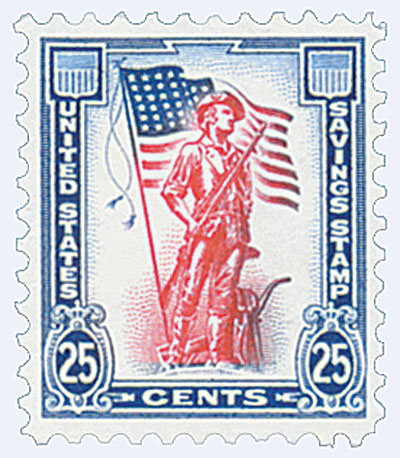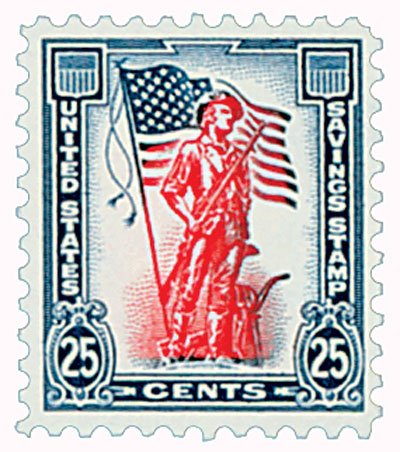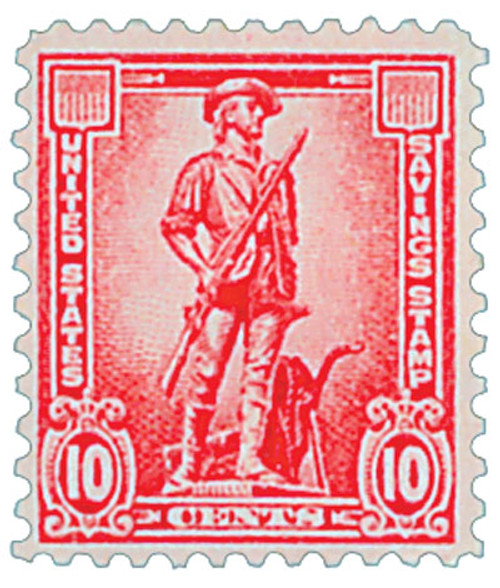
# S1 PB - 1954 10c Savings Stamps - no watermark, rose red
Â
Â
First U.S. Savings StampÂ
Over the years, there have been several different types of Savings Stamps in the U.S. In 1911, there were Postal Savings stamps that could be redeemed as credits to postal savings accounts. Then in 1917, there were War Savings stamps that could be redeemed for U.S. treasury war certificates, defense bonds or war bonds. War savings stamps were discontinued after World War I, but were reinstated with American entry into World War II and took on a new look, featuring the patriotic “Minuteman.†Postal Savings stamps of this era also featured the Minuteman.
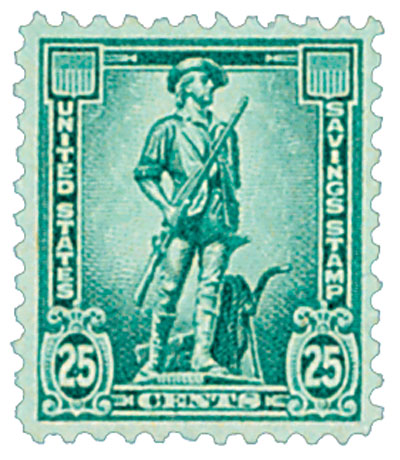
The stirring Minuteman image was then applied to a new savings stamp introduced on November 30, 1954. The United States Savings stamps program was created to encourage savings and thrift among American schoolchildren.
Stamps were issued in denominations of 10¢, 25¢, 50¢, $1, and $5. Albums and other materials that appealed to the spirit of patriotism accompanied the “Minuteman†Savings stamps.
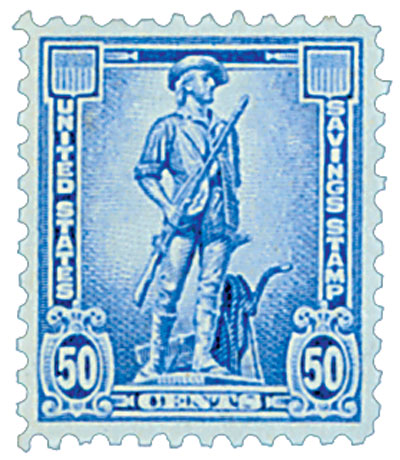
U.S. Savings stamps were purchased by school administrators at local post offices and resold to students. An album containing $18.75 in Savings stamps could be exchanged for a U.S. Savings Bond with a face value of $25.00.
In 1958, the 25¢ Savings stamp was reissued with a new design that incorporated a 48-star U.S. flag. In 1961, the 25¢ stamp was updated to include a 50-star U.S. flag in recognition of Alaska and Hawaii’s admission to the Union. The U.S. Savings stamp program was discontinued in 1970.
Â
Â
Â
First U.S. Savings StampÂ
Over the years, there have been several different types of Savings Stamps in the U.S. In 1911, there were Postal Savings stamps that could be redeemed as credits to postal savings accounts. Then in 1917, there were War Savings stamps that could be redeemed for U.S. treasury war certificates, defense bonds or war bonds. War savings stamps were discontinued after World War I, but were reinstated with American entry into World War II and took on a new look, featuring the patriotic “Minuteman.†Postal Savings stamps of this era also featured the Minuteman.

The stirring Minuteman image was then applied to a new savings stamp introduced on November 30, 1954. The United States Savings stamps program was created to encourage savings and thrift among American schoolchildren.
Stamps were issued in denominations of 10¢, 25¢, 50¢, $1, and $5. Albums and other materials that appealed to the spirit of patriotism accompanied the “Minuteman†Savings stamps.

U.S. Savings stamps were purchased by school administrators at local post offices and resold to students. An album containing $18.75 in Savings stamps could be exchanged for a U.S. Savings Bond with a face value of $25.00.
In 1958, the 25¢ Savings stamp was reissued with a new design that incorporated a 48-star U.S. flag. In 1961, the 25¢ stamp was updated to include a 50-star U.S. flag in recognition of Alaska and Hawaii’s admission to the Union. The U.S. Savings stamp program was discontinued in 1970.
Â




